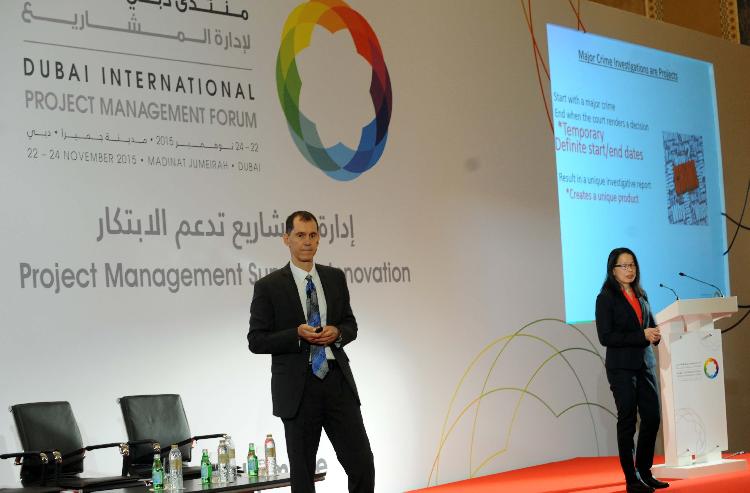
DIPMF session calls for flexible model in managing innovation projects
DIPMF session calls for flexible model in managing innovation projects
Participants in the session held by the Dubai International Project Management Forum (DIPMF) entitled: {Project Management Supports Innovation … Do you agree or not?} concluded that the conventional Projects Management model would not be good enough for managing innovation projects. They stated that the optimum solution is to develop a flexible model allowing for repeated try and error attempts under a systematic and orderly manner. They also stressed the importance of revamping the corporate management style with the aim of diffusing the culture of innovation such that it would become a responsibility of each employee in the organization.
The session was attended by HE Abdullah Abdul Rahman Al Shaibani, Secretary General of the Dubai Executive Council; HE Mattar Al Tayer, Director-General and Chairman of the Board of Executive Directors of the Roads and Transport Authority (RTA); HE Engineer Hussain Nasir Lutah, Director General of Dubai Municipality; HE Saeed Mohammed Al Tayer, Managing Director and CEO of Dubai Electricity & Water Authority; Her Excellency Muna Al Marri, Director General of Dubai Government Media Office; HE Ahmed Al Matrooshi, Managing Director of Emaar Properties; HE Ali Sebaa Al Marri, Executive President of Mohammed Bin Rashid School of Government; HE Dr. Mansour Al Awar, Chancellor of Hamdan Bin Mohammed Smart University; and HE Faris Saif Al Mazroui, CEO of Etihad Rail. Also took part in the session the international expert Tom Kelly, Founder Partner of IDU Graphic Design & Development; Dr. Edward Hoffman, Chief Knowledge Officer – NASA; HE Mark A. Langley, President and Chief Executive Officer, Project Management Institute (PMI); and Michael Barrett, Professor of Information Systems and Innovation Studies– Cambridge University.
Participants in the session unanimously agree that projects management supports innovation, provided there is a change in the model of projects management in use as project management is a systematic process comprising clear steps. However, innovation is associated with repeated trials & errors. Therefore the traditional model will not be sufficient for managing innovation projects, and a flexible method allowing for repeated trials has to be developed. They also called for revamping the corporate management style through embedding the innovation culture by mapping out a clear strategy, and a comprehensive framework. Moreover, the human and physical resources have to be provided to foster a proper innovation management. They also emphasized the importance of recognizing innovative ideas and innovators such that innovation would become a responsibility of each staff in any organization.



























